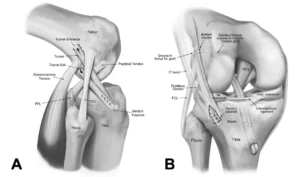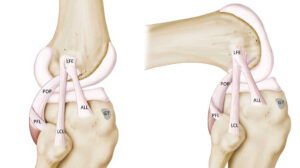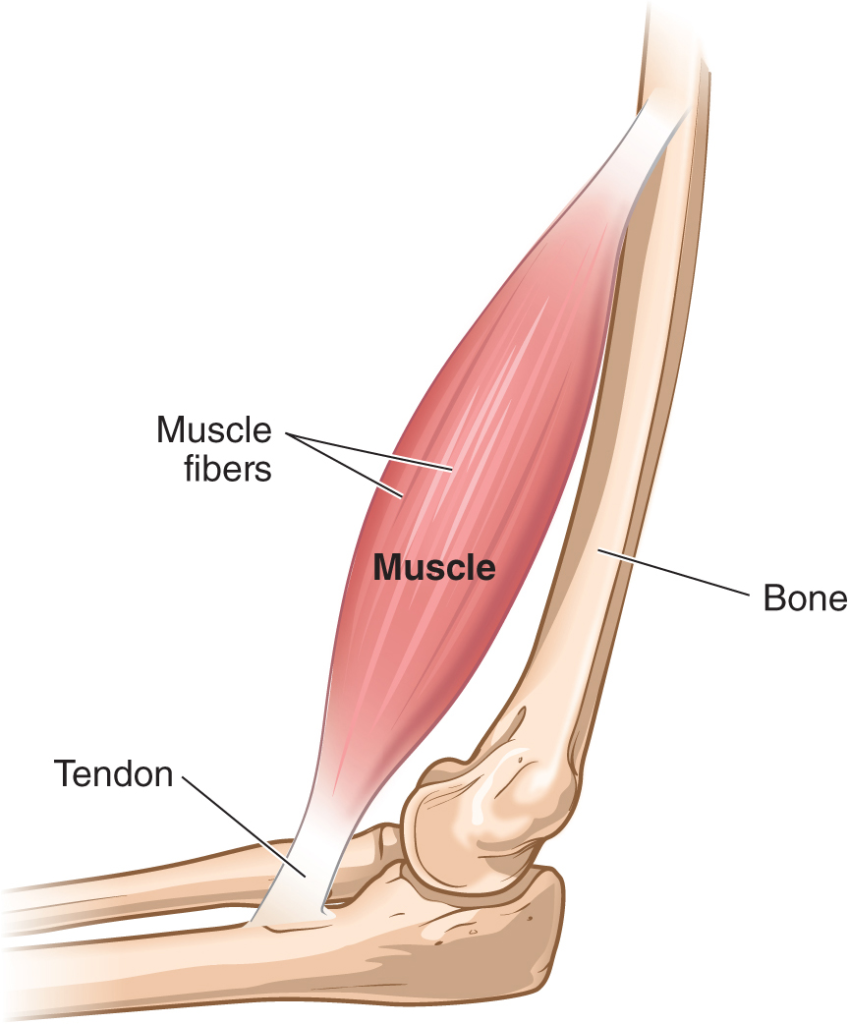band of tissue connecting muscle and bone nyt, often featured in the New York Times, plays a big role in our movement and health. This band, known as a tendon, helps your muscles pull on your bones so you can walk, run, and even jump. Without these strong bands, your body wouldn’t move the way it does!
Understanding band of tissue connecting muscle and bone nyte can help us take better care of ourselves and avoid injuries. Tendons are made of tough, stretchy fibers that let our muscles move our bones. Keeping these tendons healthy is important, especially if you’re active or play sports.
What Is the Band of Tissue Connecting Muscle and Bone
band of tissue connecting muscle and bone nyt, also known as a tendon, is a key part of how our body moves. Tendons are strong, flexible fibers that link muscles to bones. When your muscles contract, they pull on these tendons, which then move the bones. Without this connection, your body wouldn’t be able to perform everyday activities like walking or lifting.
Tendons are made of collagen, which gives them strength and stretchiness. Think of them like thick rubber bands that stretch and pull, helping you move in different directions. They are very important because they handle a lot of stress and strain when you move.
Understanding this band of tissue connecting muscle and bone helps us appreciate how our body works. It also shows why keeping tendons healthy is essential. When tendons are injured, it can make moving painful and difficult, so knowing about them helps us take better care of our bodies.
How the Band of Tissue Connecting Muscle and Bone Helps Us Move
band of tissue connecting muscle and bone nyt plays a major role in movement. Tendons help your muscles pull on your bones, which makes your body move. For example, when you want to lift your arm, your muscles contract and pull on the tendons. These tendons then move the bones in your arm, allowing you to lift it.
Without these tendons, your muscles wouldn’t be able to move your bones properly. This means you wouldn’t be able to do simple tasks like writing or playing sports. The band of tissue connecting muscle and bone is really important for everyday activities and sports performance.
When you understand how this band of tissue works, you can see why it’s crucial to keep tendons strong and flexible. Taking care of tendons helps keep your movements smooth and pain-free, making everyday activities easier.

Why the Band of Tissue Connecting Muscle and Bone Is Important
band of tissue connecting muscle and bone nyt is important because it keeps your body moving smoothly. Tendons are what make it possible for your muscles to move your bones. Without tendons, your muscles wouldn’t be able to make your bones move, which would limit your ability to perform various activities.
Good tendon health is vital for both everyday life and sports. If tendons are injured or not functioning properly, it can cause pain and limit movement. This is why taking care of the tendons, such as by doing proper exercises and avoiding overuse, is so important.
Keeping the band of tissue connecting muscle and bone in good shape helps you stay active and healthy. It helps you avoid injuries and ensures that your body works well, whether you’re running, jumping, or just going about your daily routine.
How Tendons Work Explained
Understanding how tendons work, or the band of tissue connecting muscle and bone, helps us see why they are so important. Tendons are tough band of tissue connecting muscle and bone nyt. When muscles contract, they pull on these tendons, which in turn pull on the bones to create movement.
Tendons are designed to handle a lot of stress and stretch. They need to be strong and flexible to do their job properly. This flexibility allows tendons to absorb and manage the stress of everyday activities and sports, helping prevent injuries.
By learning how this band of tissue functions, we can better understand how to keep our tendons healthy. Regular exercise, proper stretching, and good posture all contribute to maintaining the health of these important tissues, ensuring they can keep working effectively.
Common Problems with it
Common problems with the band of tissue connecting muscle and bone include issues like tendinitis and tears. Tendinitis happens when tendons become inflamed, usually from overuse. This can cause pain and swelling in the affected area.
Tendon tears can happen from sudden injuries or from long-term wear and tear. These tears can make moving difficult and painful. If you experience pain in a tendon, it’s important to get it checked out to prevent further damage.
Taking care of the tendons by not overworking them and doing proper warm-ups can help avoid these problems. Knowing the common issues with tendons helps in managing and treating them effectively, ensuring you can stay active and pain-free.
Signs You Might Have Issues with it
Signs that you might have issues with the band of tissue connecting muscle and bone include pain, swelling, and stiffness. If you notice pain in a specific area, especially after using that muscle a lot, it could be a sign of tendon trouble.
Swelling around a tendon is another indicator that something might be wrong. This can make the area feel tender and sore. Stiffness or difficulty moving a joint can also point to tendon problems.
If you see these signs, it’s important to rest and see a doctor if the pain continues. Identifying problems early can help in treating them before they get worse, keeping you active and comfortable.
Tips for Keeping the Band of Tissue Connecting Muscle and Bone Healthy
To keep the band of tissue connecting muscle and bone healthy, start with regular exercise and stretching. Stretching helps maintain flexibility in tendons, which can prevent injuries. Regular exercise strengthens muscles and tendons, making them more resilient.
Avoid overusing any one part of your body. Doing too much too quickly can lead to tendon problems. Instead, balance your activities and give your body time to rest and recover.
Proper warm-ups and cool-downs are also important. They prepare your tendons and muscles for activity and help them recover afterward. By following these tips, you can help keep your tendons in great shape and avoid injuries.
Exercises to Strengthen the Band of Tissue Connecting Muscle and Bone
Exercises to strengthen the band of tissue connecting muscle and bone are great for keeping tendons healthy. Strength training, like lifting weights, helps build muscle and support the tendons. Exercises such as calf raises and leg extensions can specifically target and strengthen tendons.
Stretching exercises are also important. Stretching helps keep tendons flexible and reduces the risk of injury. Gentle stretches, like hamstring stretches and shoulder stretches, can keep tendons in good condition.
Incorporating these exercises into your routine can help maintain tendon health and prevent injuries. Regular exercise and stretching ensure that your tendons stay strong and flexible, supporting your body’s movements effectively.
How to Prevent Injuries to the Band of Tissue Connecting Muscle and Bone
Preventing injuries to the band of tissue connecting muscle and bone involves a few key practices. First, always warm up before exercise. A good warm-up prepares your tendons and muscles for activity, reducing the risk of injury.
Next, avoid overusing your tendons. Too much activity without proper rest can lead to problems. It’s important to balance your workouts and give your body time to recover.
Proper technique is crucial. Using the correct form during exercises and activities can prevent unnecessary stress on tendons. By following these prevention tips, you can help keep your tendons healthy and avoid painful injuries.
The Role of the Band of Tissue Connecting Muscle and Bone in Sports
In sports, the band of tissue connecting muscle and bone plays a vital role. Tendons help athletes perform movements like running, jumping, and throwing by transferring the force from muscles to bones. This allows for powerful and precise movements.
Sports often put a lot of stress on tendons, making them more prone to injuries. Proper training and conditioning can help strengthen tendons and improve their resilience. Athletes need to focus on tendon health to maintain peak performance and prevent injuries.
Understanding the importance of tendons in sports helps athletes and coaches create effective training programs. This focus on tendon health ensures better performance and reduces the risk of injury.

Understanding Tendinitis: Problems with the Band of Tissue Connecting Muscle and Bone
Tendinitis is a common problem with the band of tissue connecting muscle and bone. It happens when a tendon becomes inflamed due to overuse or repetitive stress. This condition causes pain and swelling around the affected tendon.
Signs of tendinitis include aching or throbbing pain, especially when moving the affected area. Resting and avoiding activities that worsen the pain can help manage tendinitis. Applying ice and taking anti-inflammatory medications may also be beneficial.
Early treatment is important to prevent the condition from worsening. Understanding tendinitis helps in recognizing symptoms and seeking appropriate care to avoid long-term issues with tendons.
Treatments for Injuries to the Band of Tissue Connecting Muscle and Bone
Treating injuries to the band of tissue connecting muscle and bone often starts with rest. Giving the injured tendon a break helps reduce inflammation and pain. Ice packs can also help with swelling.
Physical therapy is a common treatment. It includes exercises that strengthen the tendon and improve flexibility. In some cases, doctors may recommend medications or injections to reduce pain and inflammation.
For severe injuries, surgery might be necessary. New treatments and therapies are continually improving how we heal tendons, offering better options for recovery. By following a treatment plan, you can support healing and return to normal activities.
How to Heal the Band of Tissue Connecting Muscle and Bone Faster
To heal the band of tissue connecting muscle and bone faster, start with rest and proper care. Giving your tendon time to recover without additional strain is essential. Using ice packs and over-the-counter pain relievers can help with pain and swelling.
Physical therapy plays a key role in speeding up recovery. Specific exercises can strengthen the tendon and improve flexibility. Gradually reintroducing activity helps the tendon adjust and heal properly.
Additionally, eating a healthy diet rich in vitamins and minerals supports tendon repair. Keeping up with these steps can help you recover faster and get back to your regular activities.
The Latest Research on the Band of Tissue Connecting Muscle and Bone
The latest research on the band of tissue connecting muscle and bone is revealing exciting new treatments. Scientists are exploring ways to improve tendon healing using stem cells and advanced therapies. These methods aim to repair and regenerate damaged tendons more effectively.
New technologies like 3D printing are also being used to create better tendon repair tools. Researchers are working on improving these treatments to make recovery faster and more successful. This ongoing research is promising for the future of tendon health and injury recovery.
Keeping up with these advancements can help you understand how to better manage and treat tendon injuries. The progress in tendon research offers hope for better solutions and quicker healing.
What Happens When the Band of Tissue Connecting Muscle and Bone Is Injured
When the band of tissue connecting muscle and bone is injured, it can cause significant problems. Tendon injuries, like tears or strains, can make movement painful and difficult. These injuries can occur from overuse, sudden trauma, or repetitive stress.
Injury to a tendon often leads to pain, swelling, and reduced movement. It’s important to address these symptoms early to prevent further damage. Rest and proper treatment are crucial for healing.
Understanding the impact of tendon injuries helps in managing them effectively. By following recommended treatments and care, you can support recovery and maintain your ability to move comfortably.
How to Take Care of the Band of Tissue Connecting Muscle and Bone in Daily Life
Taking care of the band of tissue connecting muscle and bone in daily life involves a few simple steps. Start with regular stretching and strengthening exercises to keep tendons healthy and flexible. Avoid overuse and give your body time to rest between intense activities.
Good posture and ergonomics also play a role in tendon health. Ensure that your work and daily activities don’t put unnecessary strain on your tendons. Proper technique in movements can prevent injuries.
By incorporating these practices into your daily routine, you can support tendon health and reduce the risk of injuries. Keeping tendons in good condition helps you stay active and pain-free.
The Science Behind the Band of Tissue Connecting Muscle and Bone
The science behind band of tissue connecting muscle and bone nyt reveals how tendons work. Tendons are made of collagen fibers that provide strength and flexibility. These fibers allow tendons to stretch and handle the forces applied during movement.
Research shows that tendons adapt to stress by changing their structure. This means they can become stronger with proper use but may also become more prone to injury if overused. Understanding this science helps in managing tendon health and preventing injuries.
By learning about the science of tendons, you can make informed decisions about your exercise and recovery practices. This knowledge supports better tendon care and overall health.
Why Collagen Is Important for the Band of Tissue Connecting Muscle and Bone
Collagen is crucial for the band of tissue connecting muscle and bone because it gives tendons their strength and flexibility. Collagen fibers are tightly packed and aligned in tendons, allowing them to withstand stress and stretch without breaking.
Without enough collagen, tendons would be weak and prone to injuries. Collagen helps tendons recover from stress and strain, making it essential for maintaining tendon health. Eating foods rich in collagen, like bone broth or certain supplements, can support tendon repair and strength.
Understanding the role of collagen highlights why it’s important to keep tendons healthy. Proper nutrition and care help maintain the collagen in tendons, supporting better movement and reduced injury risk.
Stretching and than What You Need to Know
Stretching is important for the band of tissue connecting muscle and bone because it keeps tendons flexible and healthy. Regular stretching exercises help prevent stiffness and improve range of motion. This reduces the risk of tendon injuries.
Stretching before and after activities warms up the tendons, making them more resistant to injury. Gentle stretches, like hamstring stretches and arm stretches, keep tendons limber and ready for movement.
Incorporating stretching into your routine supports tendon health and overall flexibility. It’s a simple yet effective way to protect your tendons and enhance your physical activity.
How to Know if Your Band of Tissue Connecting Muscle and Bone Needs Medical Attention
To know if your band of tissue connecting muscle and bone needs medical attention, look for signs like persistent pain, swelling, or difficulty moving. If these symptoms continue despite rest and home care, it may be time to consult a doctor.
Seek medical help if you experience severe pain or a noticeable loss of function. A healthcare provider can assess the condition of your tendons and recommend appropriate treatment options.
Getting timely medical attention helps prevent further damage and ensures you receive the best care for tendon injuries. Recognizing when to seek help supports better recovery and tendon health.
Foods That Help it Stay Strong
Eating certain foods helps the band of tissue connecting muscle and bone stay strong and healthy. Foods rich in collagen, like bone broth, can support tendon repair and flexibility. Omega-3 fatty acids, found in fish, also help reduce inflammation and promote healing.
Vitamins and minerals are essential too. Vitamin C helps with collagen production, and minerals like zinc and magnesium support overall tendon health. Incorporating these nutrients into your diet can help maintain strong and resilient tendons.
By choosing the right foods, you support the health of your tendons and improve your body’s ability to handle stress and recover from injuries.
The Connection Between Posture and the Band of Tissue Connecting Muscle and Bone
The connection between posture and the band of tissue connecting muscle and bone is important for tendon health. Good posture helps evenly distribute stress on tendons, reducing the risk of injuries. Poor posture can put extra strain on tendons, leading to pain and discomfort.
Maintaining proper posture while sitting, standing, and moving helps keep tendons healthy. Simple adjustments, like sitting up straight and aligning your body correctly during activities, can make a big difference.
Taking care of your posture supports tendon health and prevents problems. Regularly checking and improving your posture contributes to overall well-being and reduces the risk of tendon issues.
Future Treatments for the Band of Tissue Connecting Muscle and Bone
Future treatments for the band of tissue connecting muscle and bone are looking promising. Researchers are developing new methods to repair and regenerate tendons, such as using stem cells and advanced biomaterials. These treatments aim to improve healing and strengthen tendons more effectively.
New technologies, like 3D printing and tissue engineering, are also being explored to enhance tendon repair. These innovations offer hope for faster recovery and better outcomes for tendon injuries.
Keeping an eye on these advancements helps you stay informed about the best options for tendon care. The future of tendon treatment holds exciting possibilities for improved health and recovery.
conclusion
band of tissue connecting muscle and bone nyt is super important for how we move and stay active. These tendons help your muscles pull on your bones, allowing you to walk, run, and even jump. Taking care of these tendons by stretching, strengthening, and not overusing them can keep you moving comfortably and prevent injuries.
Remember, keeping your tendons healthy means paying attention to your exercise routine, eating right, and using good posture. By following these simple steps, you can help ensure that your tendons stay strong and flexible. This way, you can enjoy all the fun activities you love without any pain or trouble.


